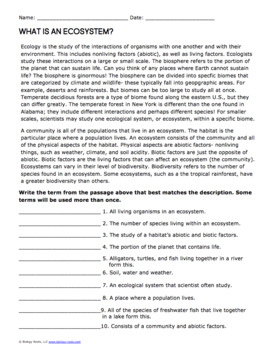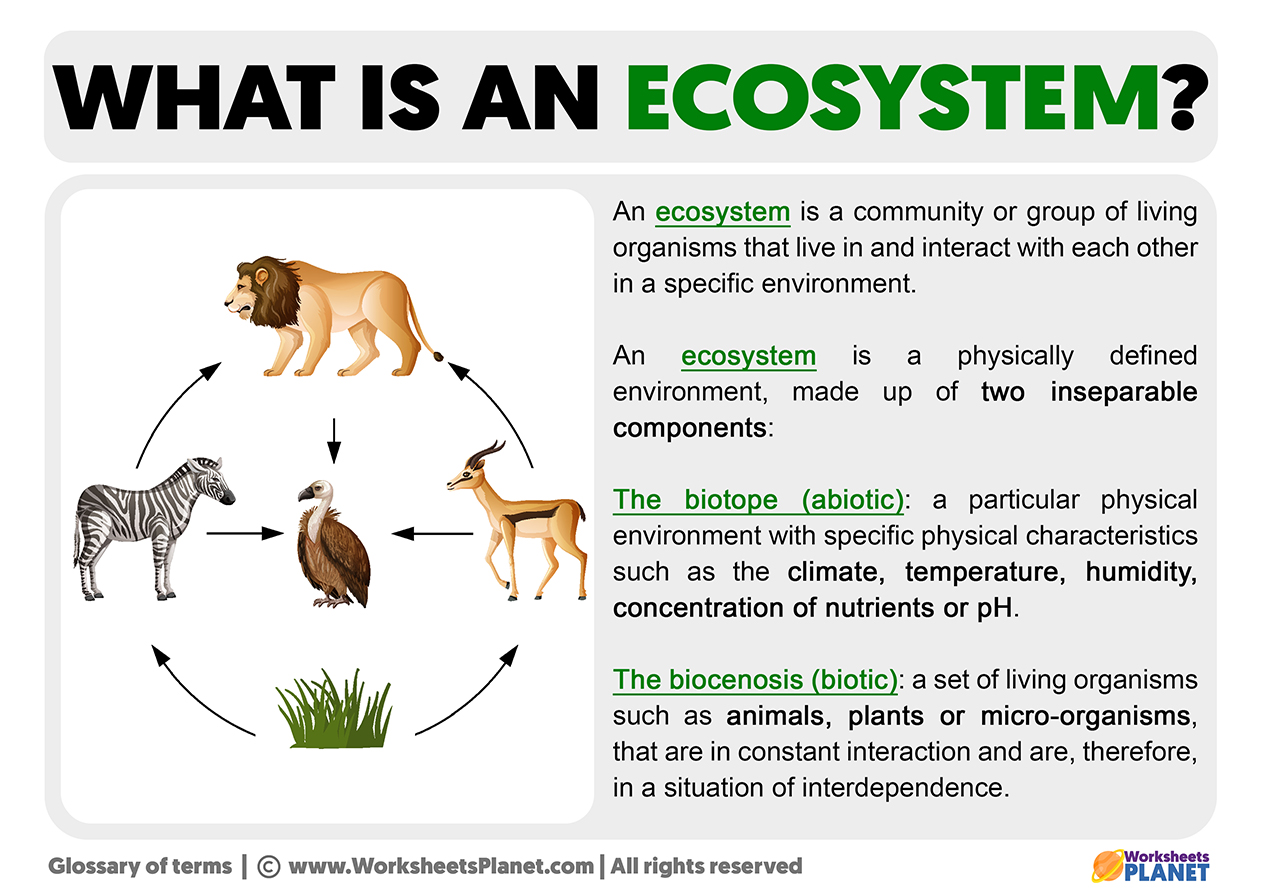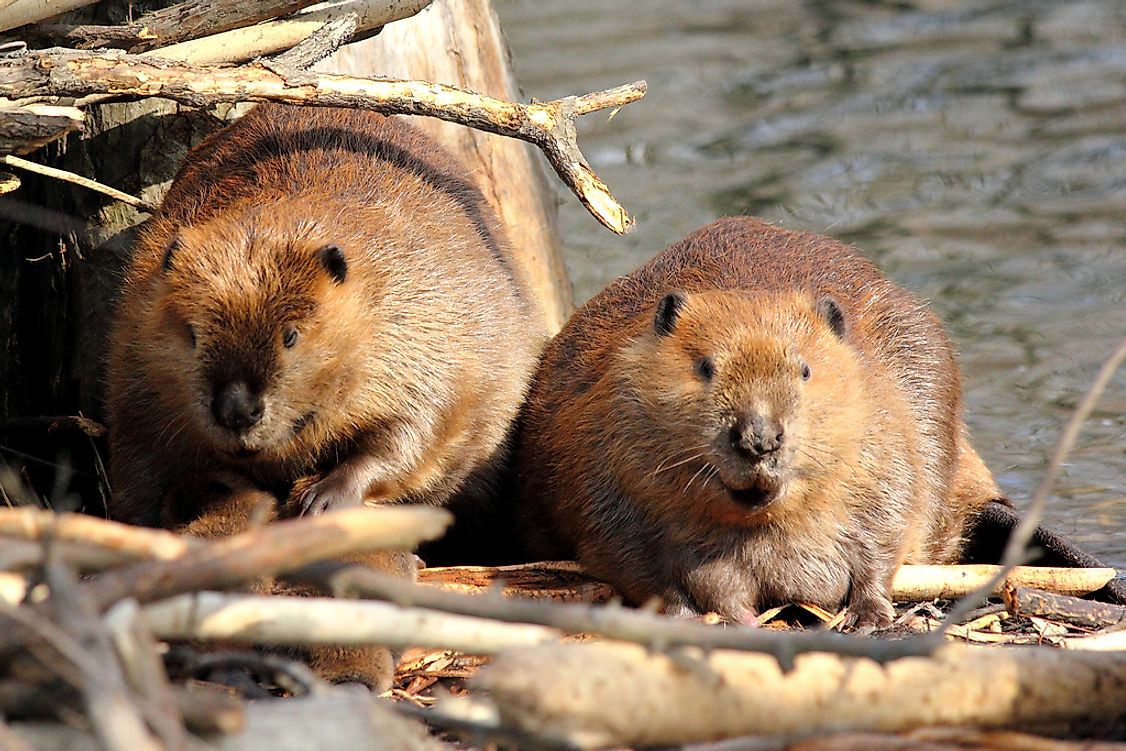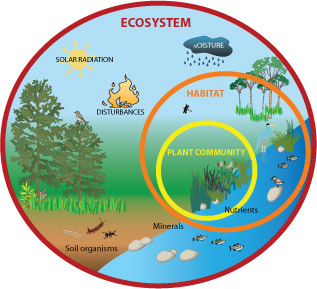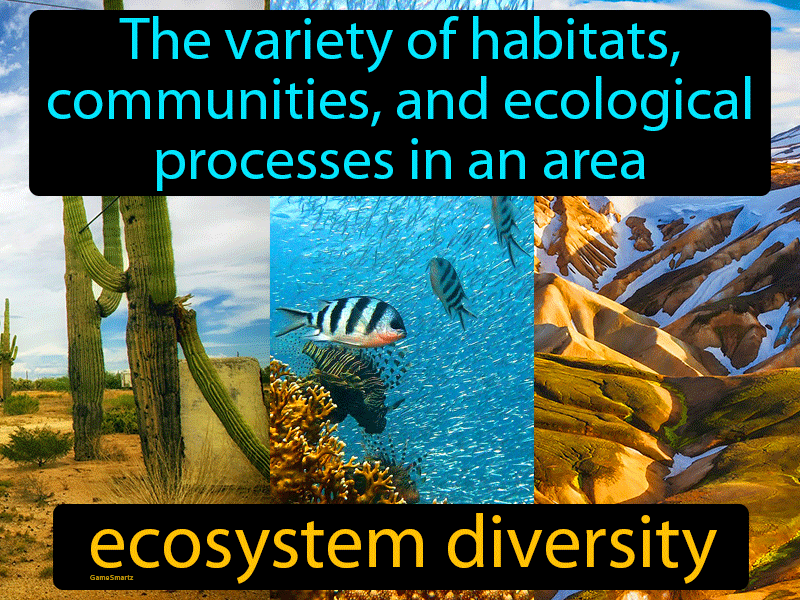Topic definition of the word ecosystem: Explore the essence of ecosystems, where life intricately connects, weaving a vibrant tapestry of interdependence and diversity.
Table of Content
- What is the meaning of the word ecosystem?
- What is an Ecosystem?
- Components of an Ecosystem
- Types of Ecosystems
- Importance of Ecosystems
- Threats to Ecosystems
- Ecosystem Conservation Efforts
- YOUTUBE: Ecosystem Definition
- Role of Biodiversity in Ecosystems
- Ecosystem Services
- Human Impact on Ecosystems
- Case Studies: Ecosystem Restoration
What is the meaning of the word ecosystem?
An ecosystem refers to a complex community of living organisms, their physical environment, and the interactions between them. It encompasses a diverse range of species, such as plants, animals, and microorganisms, as well as non-living elements like air, water, and soil. Ecosystems can vary in size from small ponds to vast forests, and they are interconnected through various ecological relationships.
- An ecosystem consists of biotic components, which are living organisms, and abiotic components, which are non-living factors like temperature, sunlight, and nutrients.
- These components interact and rely on each other for survival and growth, creating a delicate balance within the ecosystem.
- Energy flows through an ecosystem in the form of food chains and food webs, where organisms obtain energy by consuming other organisms or organic matter.
- Ecosystems provide essential services to the environment and human well-being, such as regulating climate, purifying air and water, and supporting biodiversity.
READ MORE:
What is an Ecosystem?
An ecosystem is a dynamic complex of plant, animal, and microorganism communities and the nonliving environment, interacting as a functional unit. This intricate network supports the life cycles and energy flows that make life on Earth possible.
- Biological Components: Includes all living organisms, from tiny bacteria to large mammals, each playing a role in the ecosystem"s balance.
- Physical Components: Encompasses water, air, soil, and climate, forming the foundation that supports and connects life.
- Interactions: The relationships between organisms and their environment, including predation, competition, symbiosis, and decomposition, drive the ecosystem"s functionality.
- Energy Flow: The sun is the primary energy source, driving photosynthesis in plants, which in turn supports the entire food web.
- Nutrient Cycling: The recycling of nutrients from the environment through organisms and back into the environment is crucial for sustaining life.
Ecosystems vary greatly in size and complexity, from small ponds to vast forests, each with its unique characteristics and inhabitants. Understanding ecosystems is vital for their conservation and the sustainability of our planet.

Components of an Ecosystem
Ecosystems are comprised of biotic (living) and abiotic (non-living) components that interact in complex ways. Understanding these components is essential for grasping how ecosystems function and support diverse forms of life.
- Biotic Components:
- Producers (Autotrophs): These include plants and algae that produce their own food through photosynthesis, forming the base of the ecosystem"s food web.
- Consumers (Heterotrophs): Animals that consume other organisms for energy. They are categorized as herbivores, carnivores, omnivores, and decomposers.
- Decomposers: Fungi and bacteria that break down dead organic matter, returning nutrients to the soil and completing the nutrient cycle.
- Abiotic Components:
- Water: Essential for all life, water is a medium for chemical reactions in organisms and ecosystems.
- Soil: Comprises minerals and organic matter, providing a habitat and nutrients for plants and microorganisms.
- Air: Supplies oxygen for respiration and carbon dioxide for photosynthesis, crucial for life processes.
- Climate: Influences temperature, precipitation, and sunlight, which directly affect ecosystem dynamics.
These components work together to maintain the delicate balance of ecosystems, supporting a diverse array of life and ecological functions.
Types of Ecosystems
Ecosystems are diverse and can be classified into various types based on their environment and the living organisms they support. Understanding these types helps us appreciate the variety of life forms and their unique adaptations.
- Terrestrial Ecosystems: These are land-based ecosystems, which include:
- Forests: Rich in trees and vegetation, supporting a wide range of animal life.
- Grasslands: Dominated by grasses, they are home to many herbivores and predators.
- Deserts: Characterized by low rainfall, they support highly adapted plant and animal species.
- Tundra: Cold, treeless regions with permafrost, supporting a limited range of species.
- Aquatic Ecosystems: These are water-based ecosystems, which include:
- Freshwater Ecosystems: Lakes, rivers, and wetlands, supporting diverse fish, bird, and plant life.
- Marine Ecosystems: Oceans and seas, home to a vast array of fish, mammals, and coral reefs.
- Artificial Ecosystems: Created by humans, such as urban ecosystems, agricultural lands, and artificial lakes, which also support diverse life forms and interactions.
Each ecosystem type has its own unique characteristics and plays a vital role in the Earth"s ecological balance.
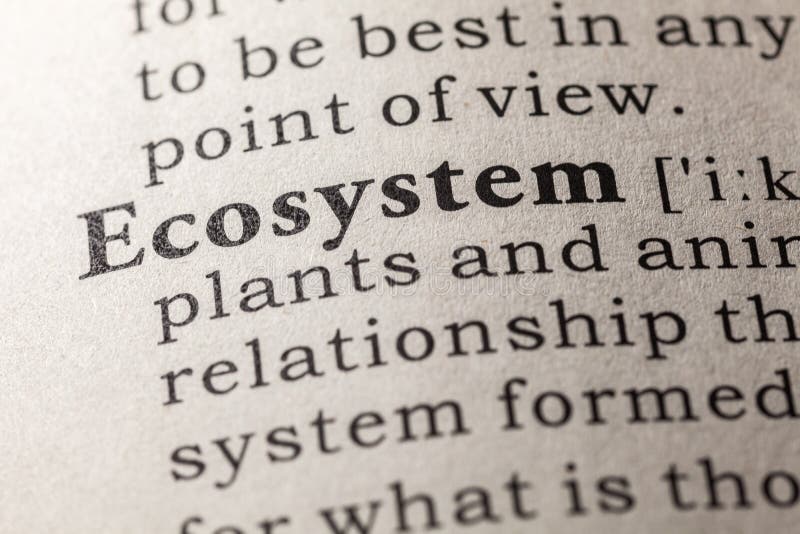
Importance of Ecosystems
Ecosystems are fundamental to life on Earth, providing invaluable services that sustain and enrich our planet. Their importance encompasses a wide range of benefits, from basic needs to complex ecological functions.
- Supporting Life: Ecosystems provide habitat for a vast array of species, maintaining biodiversity and genetic variation essential for adaptation and survival.
- Provisioning Services: They offer a plethora of resources like food, fresh water, wood, and medicinal plants, directly supporting human survival and economic activities.
- Regulating Services: Ecosystems regulate climate, floods, diseases, and water purification, mitigating environmental hazards and ensuring stability.
- Cultural Services: They contribute to human well-being through recreational, aesthetic, and spiritual benefits, enriching our cultural experiences and mental health.
- Nutrient Cycling: The breakdown and recycling of organic material provides nutrients that are crucial for plant growth and soil fertility.
- Carbon Sequestration: Ecosystems play a key role in capturing and storing carbon dioxide, helping to mitigate the impacts of climate change.
Protecting ecosystems is vital not only for the environment but also for human health, prosperity, and future generations. Their preservation and restoration are critical global priorities.
Threats to Ecosystems
Ecosystems face numerous threats that can disrupt their balance and diminish their ability to support life. Understanding these threats is crucial for effective conservation efforts.
- Habitat Destruction: Deforestation, urban expansion, and agriculture degrade habitats, reducing biodiversity and ecosystem services.
- Pollution: Air, water, and soil pollution from industrial, agricultural, and urban sources can have devastating effects on ecosystems.
- Climate Change: Altered temperature and precipitation patterns affect species distributions and ecosystem functions, leading to biodiversity loss.
- Invasive Species: Non-native species can outcompete, prey on, or bring diseases to native species, disrupting ecological balance.
- Overexploitation: Unsustainable fishing, hunting, and logging practices deplete resources faster than they can regenerate, leading to species decline.
- Land Use Change: Converting natural landscapes into agricultural or urban areas reduces the space available for native species and alters ecological processes.
Addressing these threats requires coordinated global efforts, sustainable practices, and policies that promote the conservation and restoration of ecosystems.

Ecosystem Conservation Efforts
Conserving ecosystems is vital for sustaining biodiversity and the services they provide. Various strategies and initiatives are in place to protect these natural systems.
- Protected Areas: Establishing national parks, wildlife reserves, and marine sanctuaries to safeguard habitats and species from human activities.
- Restoration Projects: Rehabilitating degraded ecosystems, such as reforestation efforts and wetland restoration, to restore ecological balance and functions.
- Sustainable Practices: Promoting sustainable agriculture, forestry, and fishing practices to minimize environmental impact and maintain natural resources.
- Legislation and Policies: Implementing laws and policies that protect endangered species, regulate pollutants, and manage natural resources responsibly.
- Community Involvement: Engaging local communities in conservation efforts, recognizing their role and dependence on healthy ecosystems for their livelihoods.
- International Agreements: Participating in global pacts like the Convention on Biological Diversity to address environmental challenges collectively.
- Research and Monitoring: Conducting scientific research to understand ecosystems better and monitoring changes to inform conservation strategies.
Through these combined efforts, we can ensure the preservation of ecosystems for future generations, maintaining the planet"s biodiversity and ecological services.
Ecosystem Definition
Ecosystems are amazing and intricate networks where plants, animals, and environment coexist harmoniously. Discover the breathtaking beauty of nature in this captivating video showcasing the wonders of our precious ecosystems. Join us and explore the wonders of the environment together! Curious about the definition of a complex concept? Let us provide you with a clear and engaging explanation in our video. Explore the depths of intricate definitions in an easy-to-understand format. Watch now and unravel the mysteries behind various definitions with us!
Ecosystem Definition
Ecosystems are amazing and intricate networks where plants, animals, and environment coexist harmoniously. Discover the breathtaking beauty of nature in this captivating video showcasing the wonders of our precious ecosystems. Join us and explore the wonders of the environment together! Curious about the definition of a complex concept? Let us provide you with a clear and engaging explanation in our video. Explore the depths of intricate definitions in an easy-to-understand format. Watch now and unravel the mysteries behind various definitions with us!
Role of Biodiversity in Ecosystems
Biodiversity, the variety of life in all its forms and levels, plays an essential role in maintaining the health and resilience of ecosystems. It contributes to ecosystem services that support life on Earth.
- Enhanced Resilience: Diverse ecosystems are more resilient to disturbances like natural disasters and climate change, as they can adapt and recover more quickly.
- Productivity: A greater variety of species ensures a wider range of ecosystem services, leading to more productive ecosystems that can support more life.
- Nutrient Cycling: Biodiversity contributes to the efficient recycling of nutrients, essential for plant growth and soil fertility.
- Pollination: A variety of insects and birds provide pollination services, crucial for the reproduction of many plants and food crops.
- Disease Regulation: Diverse ecosystems can regulate diseases by supporting a variety of species that can limit the spread of pathogens.
- Genetic Resources: Biodiversity offers a pool of genetic material that can lead to new medicines, crops, and other resources beneficial to humans.
- Cultural and Aesthetic Value: Biodiversity enriches cultures and provides inspiration, recreation, and spiritual value to human societies.
Protecting biodiversity is therefore integral to ecosystem conservation and sustainability, ensuring the continued provision of vital services to humanity and all life on Earth.
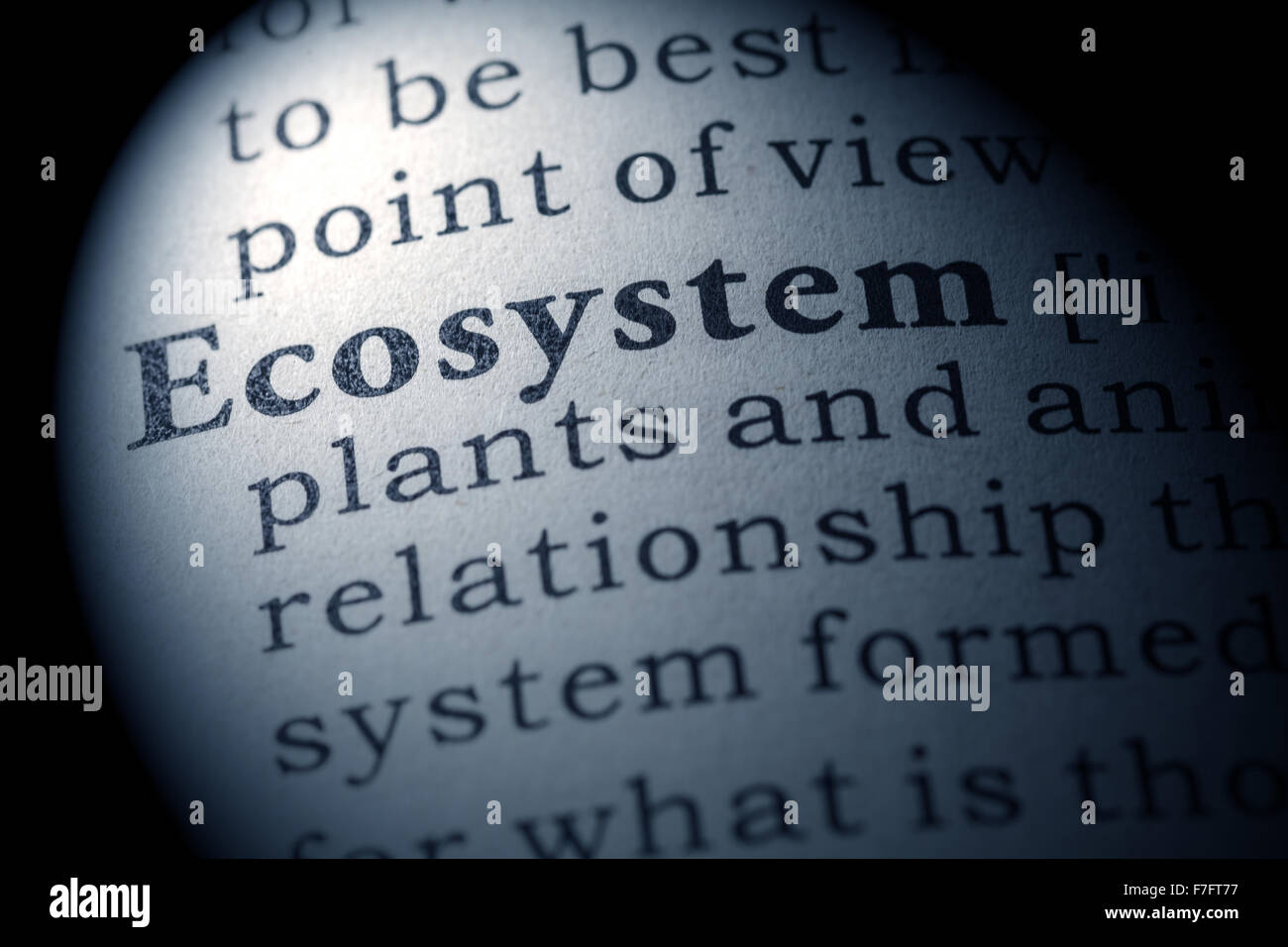
Ecosystem Services
Ecosystem services are the many and varied benefits that ecosystems provide to humanity, underpinning our survival and quality of life. These services are broadly categorized into four main types:
- Provisioning Services: These are the products obtained from ecosystems, including:
- Food (fruits, nuts, mushrooms, and fish)
- Fresh water
- Wood and fiber
- Medicinal resources
- Regulating Services: These include the benefits obtained from the regulation of ecosystem processes, such as:
- Climate regulation (both local and global)
- Flood regulation
- Disease regulation
- Water purification
- Supporting Services: These are necessary for the production of all other ecosystem services, including:
- Nutrient cycling
- Soil formation and retention
- Oxygen production
- Habitat provision
- Cultural Services: These are the non-material benefits people obtain from ecosystems through spiritual enrichment, cognitive development, recreation, and aesthetic experiences, including:
- Cultural identity and heritage
- Recreational experiences (hiking, bird watching)
- Science and education
- Inspiration and aesthetic appreciation
Understanding and preserving these services is crucial for sustainable development and the well-being of all life on Earth.
Human Impact on Ecosystems
Human activities have profound impacts on ecosystems, altering their structure and function, and often leading to significant environmental changes. Understanding these impacts is crucial for mitigating negative effects and promoting sustainability.
- Land Use Change: Urbanization, agriculture, and deforestation alter habitats, reduce biodiversity, and disrupt ecological processes.
- Pollution: Air, water, and soil pollution from industrial, agricultural, and domestic sources introduces harmful substances, affecting all components of ecosystems.
- Climate Change: Emissions of greenhouse gases from human activities are altering global climate patterns, affecting ecosystems and species distribution.
- Overexploitation: Excessive harvesting of natural resources, such as overfishing and overhunting, depletes populations and disrupts food webs.
- Invasive Species: Human-mediated introduction of non-native species can outcompete, predominate, or bring diseases to native species, altering ecosystem balance.
- Water Diversion: Alteration of water courses for irrigation, hydroelectric power, and urban use changes water availability, affecting aquatic and terrestrial ecosystems.
- Waste Production: Inadequate disposal of waste materials leads to pollution and habitat destruction, posing threats to ecosystem health.
Addressing these impacts through sustainable practices, conservation efforts, and environmental policies is essential for preserving ecosystem integrity and ensuring a healthy planet for future generations.
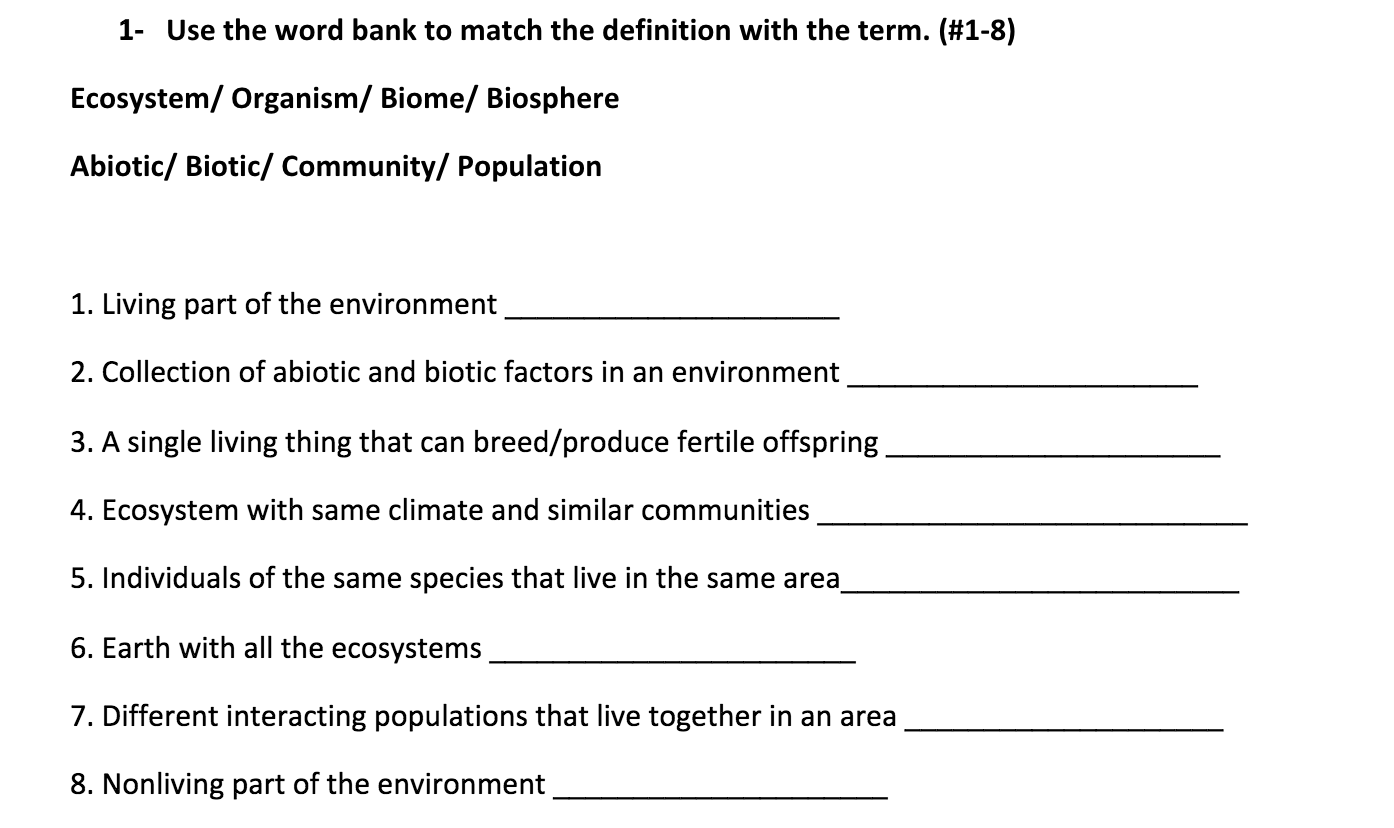
READ MORE:
Case Studies: Ecosystem Restoration
Ecosystem restoration projects worldwide demonstrate the resilience of nature and the positive impacts of conservation efforts. These case studies highlight successful initiatives to restore ecological balance and biodiversity.
- The Everglades, USA: Comprehensive efforts to restore the natural flow of water in this unique wetland ecosystem have improved water quality, revived habitats, and increased wildlife populations.
- The Loess Plateau, China: Large-scale land rehabilitation projects have transformed degraded land into fertile agricultural areas, improving local livelihoods and ecosystem services.
- The Aral Sea, Central Asia: Initiatives to reduce water diversion and restore the northern part of the sea have shown promising results in water level recovery and biodiversity improvements.
- Reforestation in Costa Rica: A national reforestation program has significantly increased forest cover, enhancing biodiversity, carbon sequestration, and eco-tourism opportunities.
- Coral Reef Restoration, Caribbean: Projects to cultivate and transplant corals have been successful in rehabilitating damaged reefs, supporting marine biodiversity and local economies.
These examples underscore the potential for human intervention to positively affect ecosystems and highlight the importance of global commitment to environmental stewardship.
Embracing the complexity of ecosystems reveals the interconnectedness of life, urging us to protect these vital systems for the well-being of our planet and future generations.
